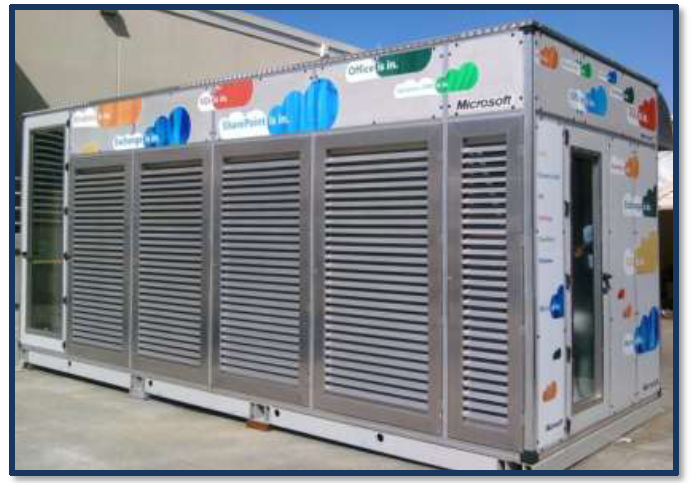Microsoft's cloud conclusions: Pre-assembled components trump datacenter containers

ISO standard containers are out. Air-cooling is in.

The author of the paper, Microsoft Distinguished Engineer Dileep Bhandarkar, includes some of the Microsoft Global Foundation Services' learnings about how best to populate and cool cloud datacenters.
(Global Foundation Services is the part of Microsoft that provides the infrastructure that powers Microsoft's various cloud offerings. GFS runs the various datacenter servers running Hotmail, Bing, Business Productivity Online Services, CRM Online, Azure and anything else Microsoft counts as its "cloud.")
The GFS team has discovered some "non-intuitive" changes that helped Microsoft improve its power consumption by 25 percent in some of its existing datacenters. These included cleaning the datacenter's roof and painting it white, and repositioning concrete walls around the externally-mounted air conditioning units to improve air flow, according to the paper.
There were some more intuitive changes that helped, as well. Microsoft has been on a campaign to "rightsize its servers," by eliminating unnecessary components and using higher efficiency power supplies and voltage converters. The company also is moving away from ISO standard containers as the best way to "contain" servers. From the white paper:
"We have learned a lot from our container experience in Chicago and have now moved more towards containment as a useful tool. We do not see ISO standard containers as the best way of achieving containment in future designs. Our experience with air side economization in our Dublin datacenter has taught us a lot too. Our discussions with server manufacturers has convinced us that we can widen the operating range of our servers and use free air cooling most of the time. Our early proof-of-concept with servers in a tent, followed by our own IT Pre-Assembled Component (ITPAC) design (shown in the image above) have led us to a new approach for our future datacenters."
Microsoft has found that air cooling is sufficient for datacenters in some climates. Evaporative coolers (also known as "swamp coolers") are necessary when temperatures go above 90 to 95 degrees Farenheit, according to the paper. While adding secondary cooling with air or water-cooled chillers does raise operational costs, their infrequent use reduces overall energy consumption, the Softies have found.
The conclusion of the white paper:
"Microsoft views its future datacenters as driving a paradigm shift away from traditional monolithic raised floor mega datacenters. Using modular pre-manufactured components yields improvements in cost and schedule. The modular approach reduces the initial capital investment and allows you to scale capacity with business demand in a timely manner."
Microsoft is hardly the only cloud vendor to be focusing on how to optimize its own datacenters to be more power-efficient and maintainable. At Amazon, former Softie (now Amazon Vice President and Distinguished Engineer) James Hamilton has continued his explorations of how best to optimize cloud datacenter performance and architecture.
Meanwhile, Microsoft is working with a handful of OEM partners to enable them to provide customers with private cloud capabilities via the recently announced Windows Azure Appliances, which are virtual private clouds in a box. I'd assume many of Microsoft's own datacenter learnings will be applied to these partner/customer-hosted datacenters, as well.